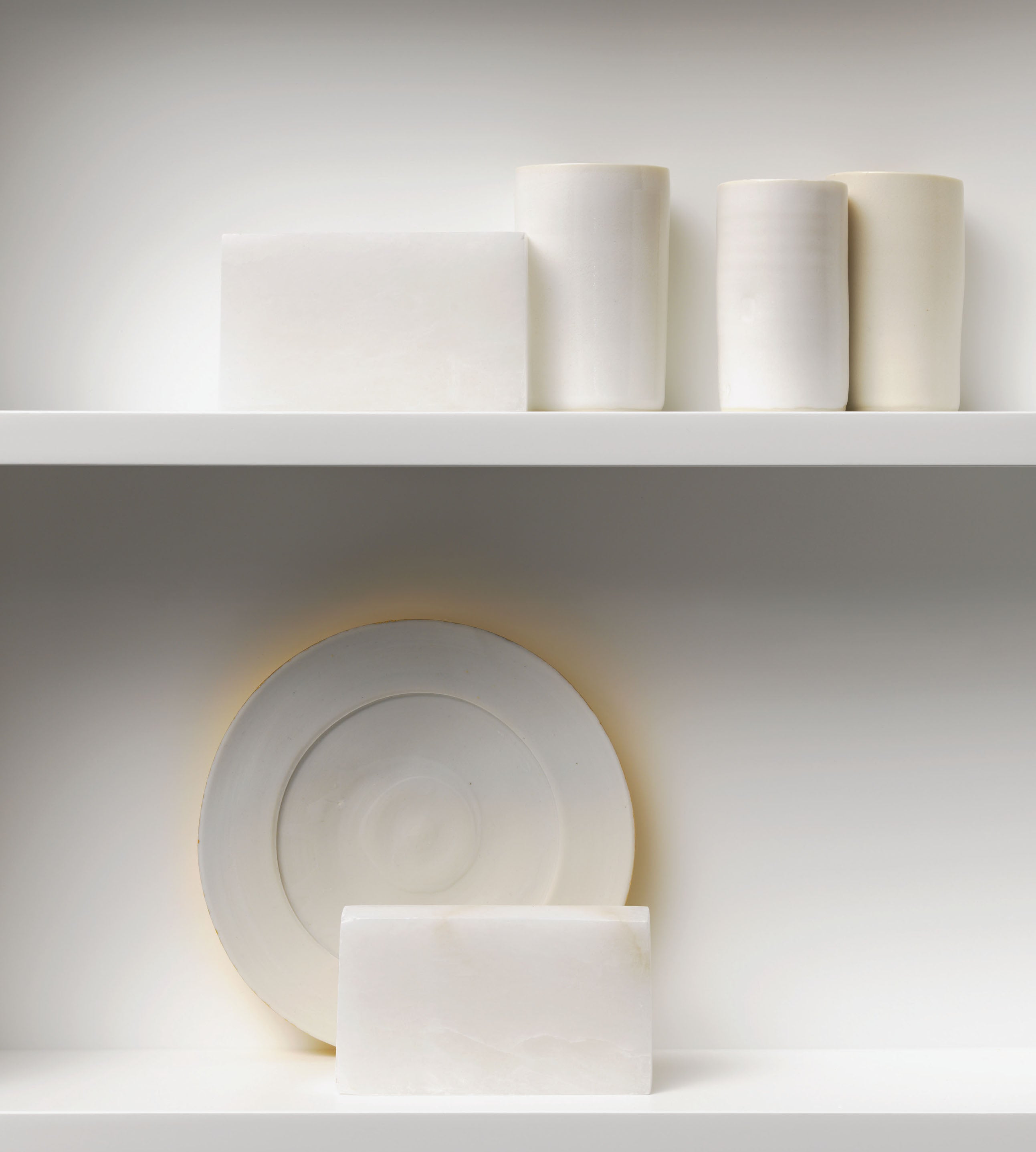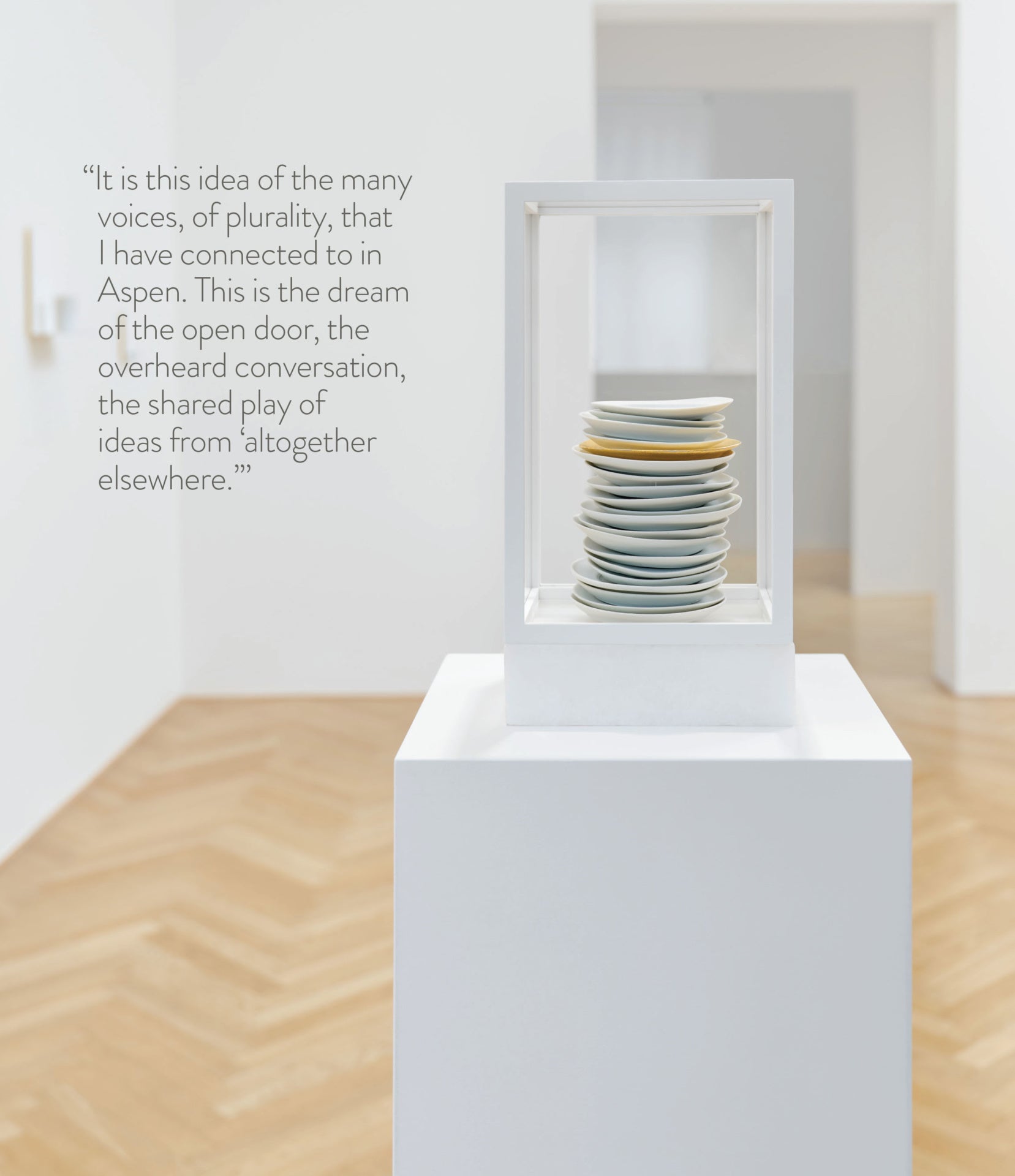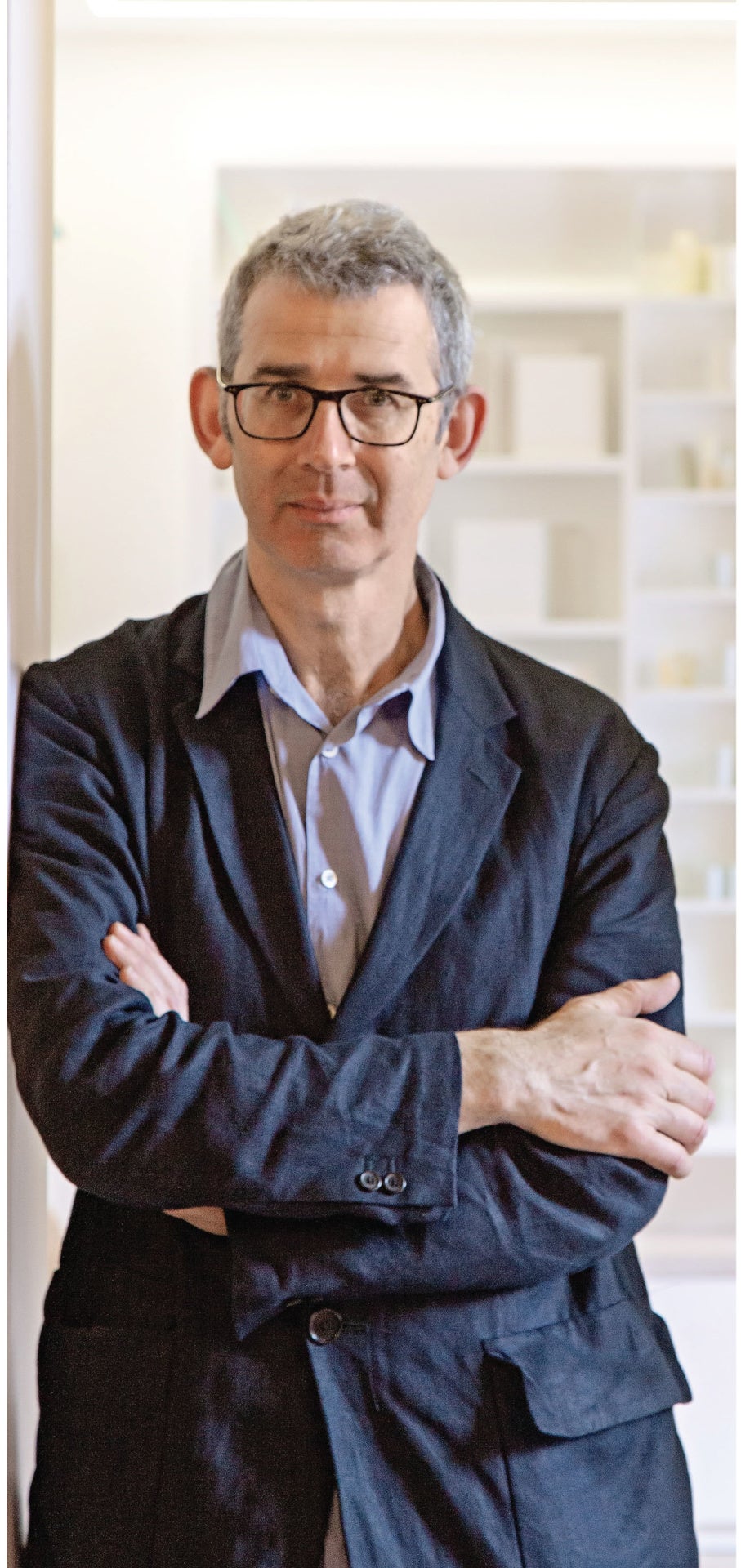 I sit at my wheel. It is low and I am tall. I hunch. There is a ziggurat of balls of porcelain clay to my left, a waiting pile of wooden boards to my right, a small bucket of water, a sponge, a knife, and a bamboo rib shaped like a hand axe in front of me. I have a cloth on my lap to wipe my hands. There is music, somewhere. My dog is nearby. And coffee.
I sit at my wheel. It is low and I am tall. I hunch. There is a ziggurat of balls of porcelain clay to my left, a waiting pile of wooden boards to my right, a small bucket of water, a sponge, a knife, and a bamboo rib shaped like a hand axe in front of me. I have a cloth on my lap to wipe my hands. There is music, somewhere. My dog is nearby. And coffee.
I make small vessels in porcelain, three or four inches high. I make them quickly, leaving the top edge ragged or elliptical. After a couple of hours I can pick them up to trim them with a knife, rapid cuts, and run a thumb along the base to smooth it clean. And then I press in my seal. After thirty years it is worn smooth of a name or place. It is just an empty oblong.
 I sit in my studio in West Norwood in an unremarkable part of South London next to the bus garage and I make my vessels and I glaze them white. All the whites from all my journeys; the accomplished, attempted, consolatory, melancholy, minatory, lambent whites. All the whites from Jingdezhen in China and Kakiemon in Japan and Tibet and Venice and Dresden, “white like a narcissus,” and Meissen and Bristol and Etruria and South Carolina and Leningrad and the Bauhaus.
I sit in my studio in West Norwood in an unremarkable part of South London next to the bus garage and I make my vessels and I glaze them white. All the whites from all my journeys; the accomplished, attempted, consolatory, melancholy, minatory, lambent whites. All the whites from Jingdezhen in China and Kakiemon in Japan and Tibet and Venice and Dresden, “white like a narcissus,” and Meissen and Bristol and Etruria and South Carolina and Leningrad and the Bauhaus.
And I place them on shelves and vitrines and create rhythms, repeated sequences of pots, attempted rhythms, pauses and caesuras. There are congestions and releases. The vessels are a kind of pause, each vessel holding a space, a breath.
Where can you pause? This is the year I became the Aspen Institute artist in residence, alongside the incomparable Rita Moreno. This year has also been the most migratory year of my life, a year of exhibitions and projects in Madrid and Venice and Vienna and New York and Berlin. I have hardly been home. The word residence reverberates. I keep thinking what residence might mean, thinking about being in a place, fully.
I keep returning to my first encounter with Aspen, coming down from the mountains into the valley as the road unspools through the forest, and you see and then lose the river below you with its velocity, its dynamic fall. And then my first sight of Herbert Bayer’s Aspen Institute campus. Bayer’s sanity, his generous cadence—the balconies, the sweep of one building set back from another, the framing of the mountains, the groves of aspen trees and the high reeds, the placing of rock—say that this is a place grounded in its genius loci. This is a place to start again. “You must change your life,” said Rilke.
It is a good line for this place.
Where do you start? In Elisabeth and Walter Paepcke’s vision it is a few words, a piece of text, a return to the classics, to music. And then structure, a sort of tent, something that enacts shelter. Add some wine and you have a symposium, a gathering, a festival. You need foundation myths. You have the beginning of an idea.
You also have an idea of a community of exile. With these foundations you create an architecture of one place coexistent with an elsewhere. Staying in these buildings I am conscious of just how much here is, in Auden’s words, “altogether elsewhere.” For Aspen is also the Bauhaus, also Black Mountain College, places where there was an idea of work as an idea in progress. Critically, the Bauhaus model was not of aesthetics but of dynamic learning: the movement from one studio to another, the flaring of ideas across disciplines, the sharing of skills, hiking into the landscape as a kind of seminar. I look at the photographs of Black Mountain College—the students working in the fields like young pioneers—and see idealism in energetic contrapuntal tension with work.
You have a place to pause.
So this summer has been my summer of Aspen—and Venice. Over the last years I realized I needed to create a new library for this city of libraries. It was to be a library of exile of 2,000 books written by those who have been forced to flee their own country or exiled within it: a library of exile for a city of exiles, of translation, of a plurality of voices, of languages in flux. And of printing. I started to study the beautiful early editions of the Talmud printed by Daniel Bomberg in the early 16th century and sent out across the world. When I saw how he kept text and commentary on text alive on a single page, I understood that text can be plural too.
 I found the Ateneo, the beautiful 16th-century building that has been a meeting place for over two centuries. I painted the external walls of the library with liquid porcelain, and wrote a new text—a listing of the lost and erased libraries of the world from Alexandria and Antioch, through burned rabbinical and madrassah libraries, to the looted library of my grandfather in Vienna, all the way to Sarajevo and Mosul. As I wrote I realized that in writing one text on top of another, one history smudging the one beneath, I was creating a palimpsest of voices.
I found the Ateneo, the beautiful 16th-century building that has been a meeting place for over two centuries. I painted the external walls of the library with liquid porcelain, and wrote a new text—a listing of the lost and erased libraries of the world from Alexandria and Antioch, through burned rabbinical and madrassah libraries, to the looted library of my grandfather in Vienna, all the way to Sarajevo and Mosul. As I wrote I realized that in writing one text on top of another, one history smudging the one beneath, I was creating a palimpsest of voices.
It is this idea of the many voices, of plurality, that I have connected to in Aspen. This is the dream of the open door, the overheard conversation, the shared play of ideas from “altogether elsewhere.” As I walk through this landscape, draw breath at this high altitude, I think about the contingency of staying and leaving places. I am returned to the idea of exile.
Perhaps being an artist in residence then is an act of alignment, a walking alongside as ideas are shared and challenged and changed. Perhaps being in residence is a dynamic pause before starting again, returning to my wheel and my clay and an empty page, changed.
Edmund de Waal, the Aspen Institute 2019 Harman/Eisner Artist in Residence at the Aspen Institute, is the best-selling author of The Hare With Amber Eyes and an internationally acclaimed ceramicist known for his large-scale installations of porcelain vessels, often created in response to collections and archives or the history of a particular place.